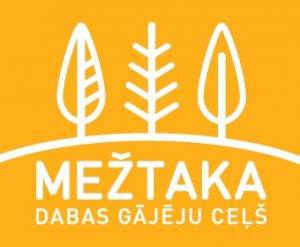Bonsai Patience Park
Next to me, rustling like a sea, is the Vidzeme Highway. At the gate, we are welcomed by Inga Valtere, who is accompanying a smiling customer with a pot of a miniature tree in her hands. The founders of the park are Inga and Valdis Valters, who started to work and arrange their oasis of peace here more than 10 years ago. The inspiration for this unusual activity came to Valdis Valters during his journey to China. The beautiful gardens and harmonious, miniature trees created a compelling desire to learn the art of shaping these trees.
The soil around the house is sandy, so it was clear at once that no beds would be created here, but the environment had to be beautiful. The first time Inga saw a bonsai, she had a question, similar to the one asked by some of the park visitors: what is the need for it and why to cripple the tree by growing it in a pot? Inga says she would never try to reshape the “notable oaks” into a bonsai. The art of shaping Bonsai trees belongs to Japanese culture, however the Valters like to make a bonsai from a tree that has a problem and wouldn’t normally survive, however here it is transformed into a beautiful plant.
Bonsai, translated from Japanese, means a tree in a pot. It turns out, it’s not a special species: with knowledge and endless patience, any tree can be made into a bonsai. What concerns the outdoor trees, bonsai can also be grown from the local tree species: the pine, juniper and fir. The Bonsai Park doesn’t grow trees from seed, because it would take a disproportionate amount of time and only Inga’s grandchildren would be able to enjoy the trees. So to accelerate the process, the potential bonsai have also been brought from masters in Poland, the Netherlands and UK. The oldest tree is now 45 years old.
Originally, it was just a passion that has been growing with time. They dug a pond, built a creek and even the building in the courtyard was decorated to remind of Japan. Friends and relatives grew to like it and encouraged the Valters not to be selfish and share the beauty with others. Now they organize public events, attracting a variety of visitors, from school tours and spinster parties to authentic tea-drinking ceremonies attended even by guests from Japan.
Inga has just learned that their house has a vivid history. Some sources say the building was built for the needs of the favorites of Catherine the Great as a hunting castle. Others say there had been the headquarters of the KGB during the Soviet time surrounded by different legends on what was happening there, this might be why it was colloquially known as the ghost house. There is no sign of ghosts and favorites here today, but rather the Valters family with their bonsai trees, dogs, Japanese rabbits, colored carps in ponds and a park full of exotic birds.
The Valters have several children, each of which has their own duties and responsibilities. Along with the Bonsai Park, that requires continued care, the Valters couple spend their daily professional life in Riga, and a special part of their time is also devoted to their rural property, which supplies the family table with rural products. When we ask Inga what the purpose of all this is, after a moment of reflection she answers that it is the beautiful environment around them and a responsible and respectful relationship with each other, based on love and joy for the work they have been entrusted.


